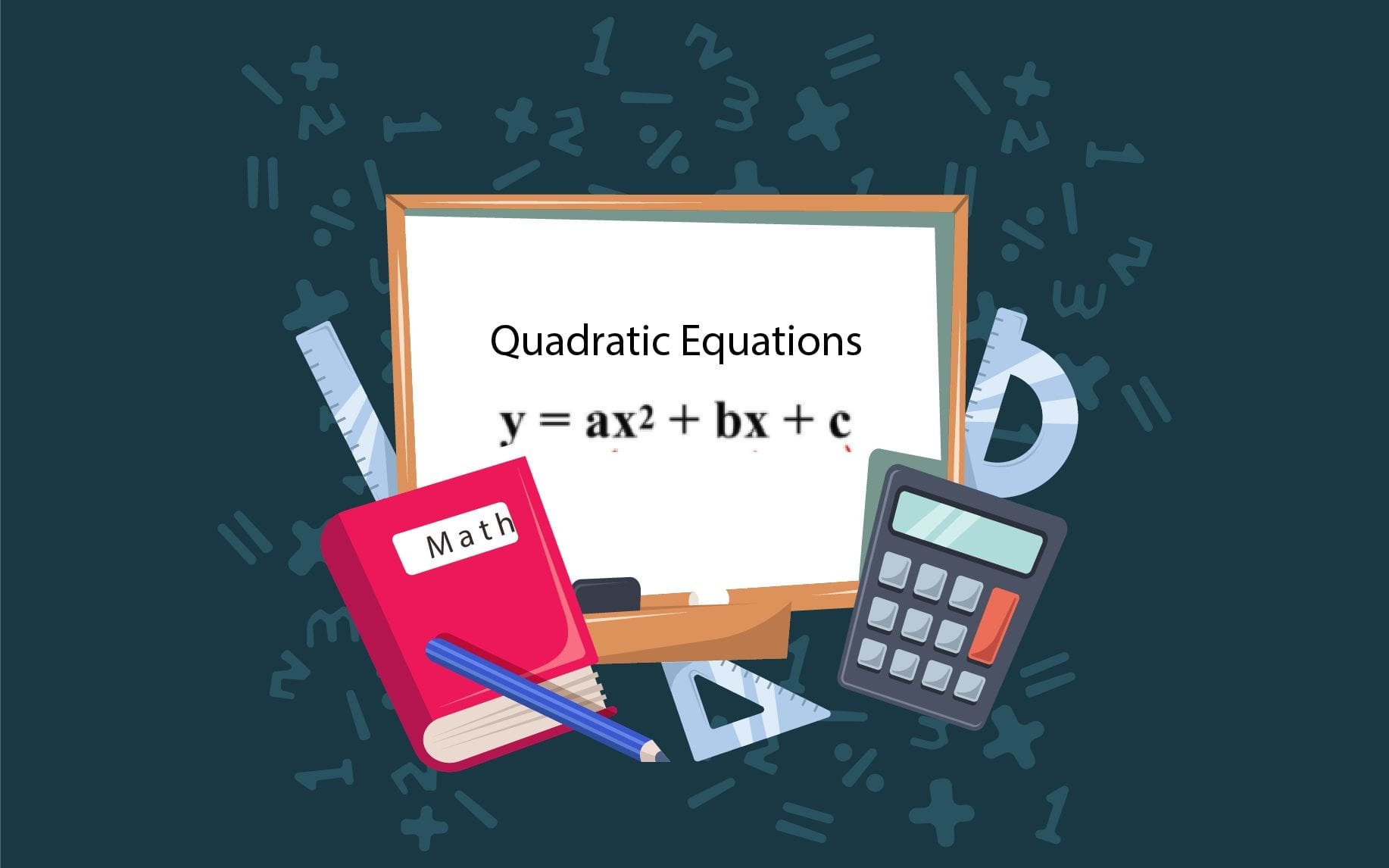Quadratic equations are polynomial equations of degree 2 in one variable of the form f(x) = ax2 + bx + c, where a, b, c, R, and an are all zero. It is the generalized case of a quadratic equation wherein ‘a’ is the leading coefficient and ‘c’ is the absolute term of f. (x). The quadratic equation’s roots (,) are the values of x which satisfy the quadratic equation. There will always be two roots to the quadratic equation. The nature of roots can be either real or fictitious.
When equated to zero, a quadratic polynomial becomes a quadratic equation. The quadratic equation’s roots are the values of x that satisfy the equation.
Table of Contents
What is a Quadratic Function?
A quadratic function, polynomial of degree 2, or simply a quadratic, is a polynomial function with one or more variables in which the highest-degree term is of the second degree. These topics may sound complex but can be learned in an easy way from Cuemath website.
Quadratic Equation Formula
The quadratic formula provides the solution or roots of a quadratic equation:
(,) = [-b ± (b2 – 4ac) ]/2ac
Roots of Quadratic Equation
The values of variables that satisfy the given quadratic equation are referred to as its roots. In other words, if f(x) = 0, x = is a root of the quadratic equation f(x).
The x-coordinates of the points where the curve y = f(x) intersects the x-axis are the real roots of an equation f(x) = 0.
- If c = 0, one of the quadratic equation’s roots is zero and the other is -b/a.
- Both the roots are zero if b and c are 0.
- The roots are reciprocal of each other if a = c.
What is Discriminant?
The discriminant of a quadratic equation is the term (b2 – 4ac) in the quadratic formula. The nature of roots is revealed by the discriminant of a quadratic equation.
Steps Involved in Factoring a Quadratic Equation
To solve the quadratic equation using the factoring method, follow the steps below.
- To initiate, align all terms on one side of the equal sign. You’ll leave nothing on the other side.
- You must now set each factor to zero.
- Every equation must be solved.
- To verify the answer, use the original equation.
Uses of Quadratic Equations
Surprisingly, quadratic equations are used in our daily lives. It can be used to calculate areas or rooms, determine the profit of a product in business, or determine the speed of an object. It is also used in athletics and sports.
Different Ways to Solve it
Solving quadratic equations can be challenging at times. However, depending on the type of quadratic that needs to be solved, there are several different methods that can be used. It can be solved in four ways. They are factoring, using square roots, completing squares, and applying the quadratic formula.
Applications of Quadratic Equations in Daily Life
-
Engineering
Engineers use quadratic equations more than any other profession. When designing curved equipment such as automobile bodies, quadratic equations are essential. Automotive engineers design brake systems by solving equations that arise. Aerospace engineers work with quadratic equations on a regular basis. Because they work with complex systems, chemical and electrical engineers must deal with quadratic equations on a daily basis. Audio engineers create sound systems by solving mathematical equations.
-
Management and Clerical Work
Every day, thousands of management and clerical jobs require the use of quadratic equations. Production, management, and engineering managers, for example, supervise people who work with equations. That means they must be well-versed in the subject. Human resource managers must determine the workforce capability of completing specific tasks.
They must also figure out how to pay for or design pension plans. All of these activities are heavily reliant on quadratic equations. Insurance agents must also deal with them because they must create complex insurance models and plans that require a great deal of computation.
